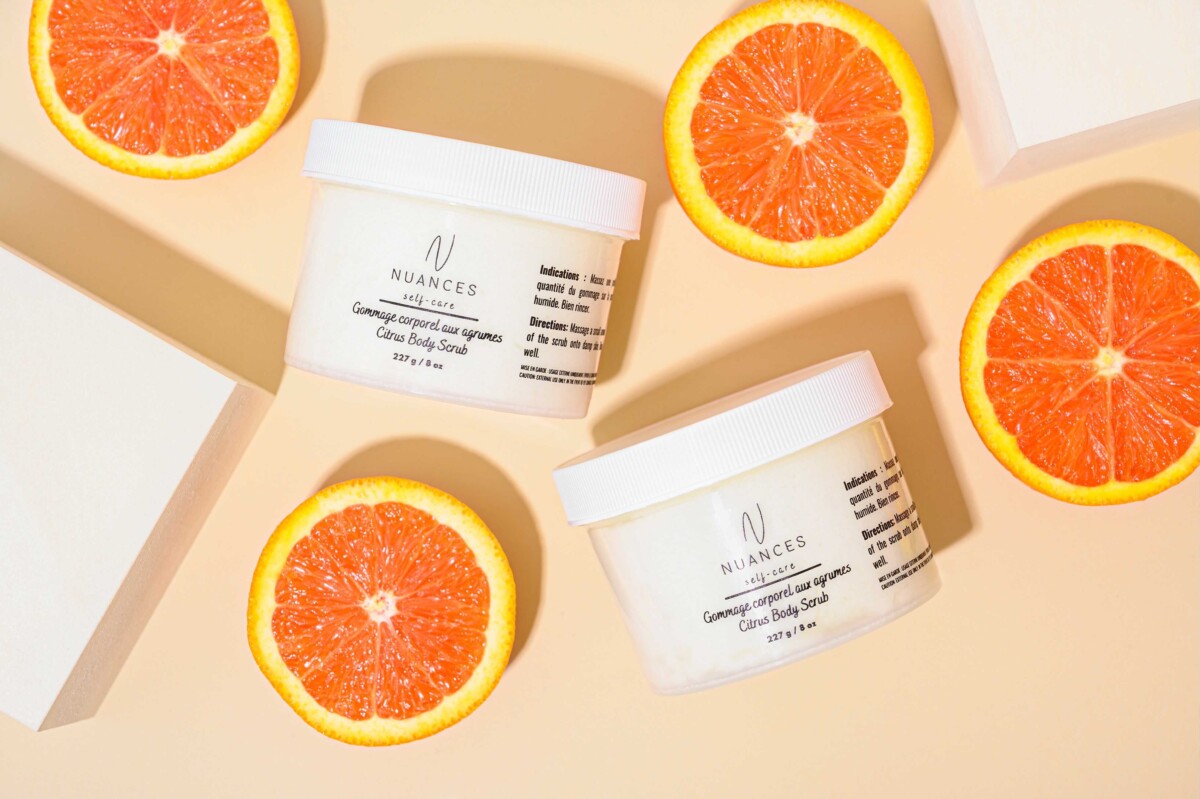Keisha Lamptey helps fill a gap in the Canadian beauty industry with inclusive haircare and skincare products
Keisha Lamptey wears an apron and clear plastic gloves as she carefully adds seed oils and seed butters to her stainless steel KitchenAid mixer. It loudly whips all the ingredients together, creating a smooth and uniform texture.
After a few minutes, she shuts off the mixer, lifts the mixing bowl and gently pours the contents into her filling machine.
An off-white creamy product comes out of the tube, filling the empty jar that she holds in her left hand with her homemade Moisturizing Hair Butter.
Lamptey is the owner of Nuances self-care, a company that manufactures natural, vegan and eco-friendly haircare and skincare products for women of all shades at an affordable cost.
Growing up in Montreal, Lamptey noticed that there was a minimal selection of products designed specifically for Black women in Canada. “I felt very underrepresented when shopping for products,” she said.
Courtesy photo provided by Keisha Lamptey
She explained that none of the mass-market beauty companies were Black-owned and none of them understood her needs as a woman with thick, curly hair. Products that did work for her had to be purchased from the United States, making it “just absolutely crazy expensive.” According to Lamptey, one small eight-ounce product would cost her $50.
“I thought to myself, ‘Canada deserves to have these products, too,’” Lamptey recalled. So, in 2017, she used her background in organic chemistry to begin experimenting with various formulas to create products catered to all skin types and kinky hair types.
But it wasn’t until December 2020 that she incorporated Nuances self-care after receiving the Canada Starts grant — a $5,000 cash prize sponsored by RBC Ventures aimed at helping aspiring entrepreneurs launch their business.
According to Lamptey, the grant covered all her start-up costs — including federal and provincial incorporation fees, website expenses, and the cost of necessary equipment, ingredients and packaging — all of which totalled about $3,700.
“Receiving that grant was so amazing,” she said. It allowed Nuances self-care to start off profitable from the get-go.
According to Lamptey, sales were high in the first few months of business. This was not only because it was the holiday season, but also because Quebec was under a lockdown, making it easier for customers to purchase their beauty products online.
Many of these early customers still support Nuances self-care nearly two years later, like Yasamin Fawzi.
‘[Nuances self-care’s products] feel good for my skin and hair and they’re really affordable,” Fawzi said. “I’m always about buying local, or buying stuff that’s more ethically sourced and natural.”
Today, Lamptey has 15 products listed on her website, each of which have gone through a detailed process. The process begins with months of researching, experimenting, and testing. Once Lamptey is satisfied with a product recipe, she orders the labels and packaging from the supplier and makes a batch for customers.
The final step of the process is marketing the new product.
According to Lamptey, she typically uses social media and her email newsletter to tease upcoming product releases and to announce new products when they come out.
But with the most recent launch, the Apple Cinnamon Body Butter, Lamptey tried a new marketing technique: she planned a launch party at a local Montreal shop. Those who wanted to purchase the product had to attend the event. It was so successful the product nearly sold out, totalling 35 sales and over $1,200 was made.
“It was a great way to create buzz and boost sales,” she said. “But it was also a good way to make myself relevant in people’s eyes.”
While Nuances self-care started as a retailer business through an e-commerce website, Lamptey is now exploring the wholesale business, too. Nuances self-care’s products are now sold in two hairdresser salons, one perfume store, one hair accessory store, and a few cafés around the city.
Courtesy photo provided by Keisha Lamptey
Lamptey shared that regular customer sales are highest in months with celebrations or holidays, with about 50 to 200 customer orders per month.
But in slower months, like last September and October, Lamptey noticed a decline in customer orders but an increase in wholesale orders. According to Lamptey, this shift is more profitable because businesses purchase more units compared to one regular customer.
Lamptey said that she dreams of selling her products in the United States and Europe, as well as selling in bigger stores like Walmart and Amazon.
While there are big dreams of expansion for Nuances self-care, loyal customers like Fawzi will continue to support them in Montreal.
